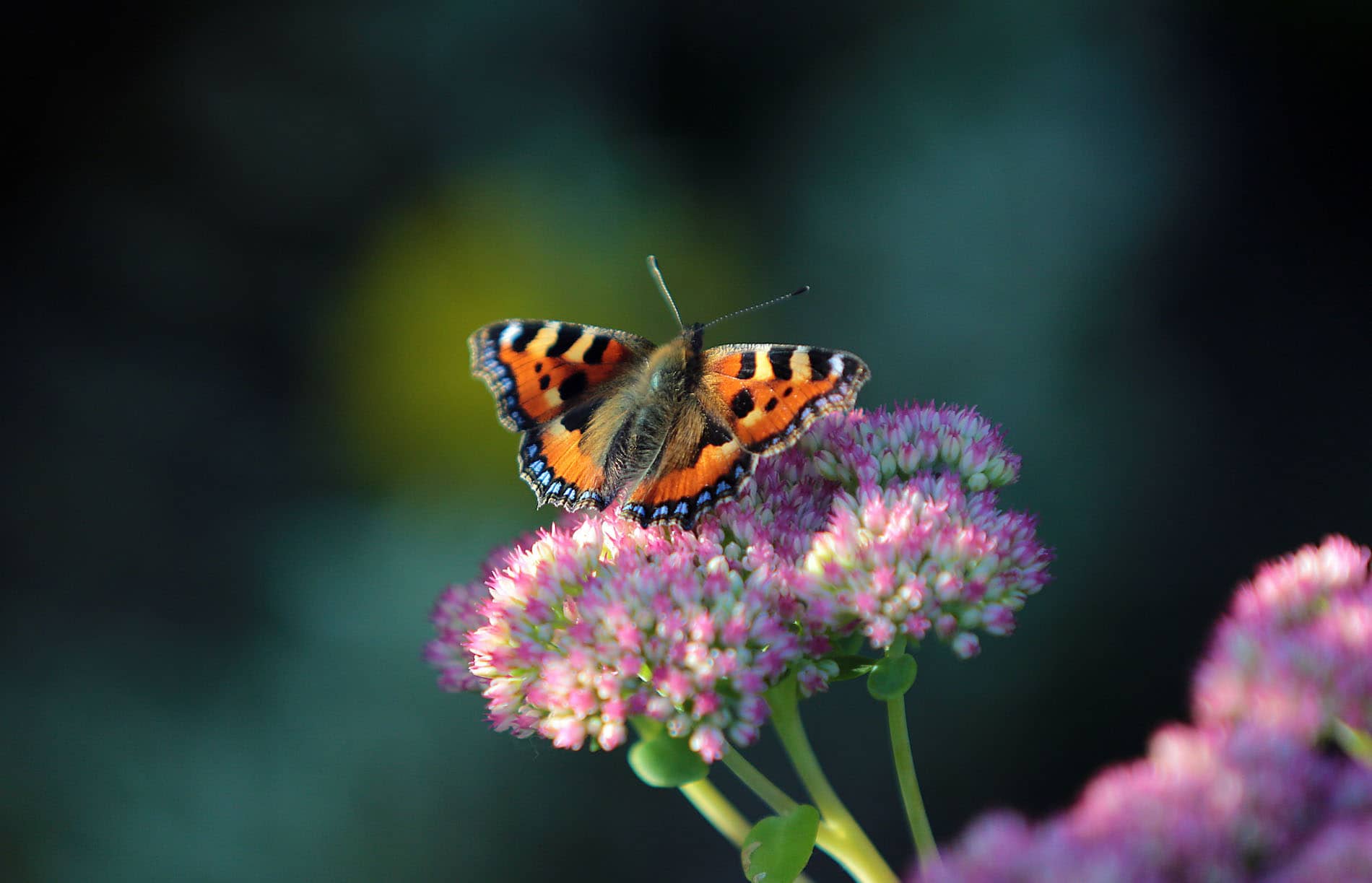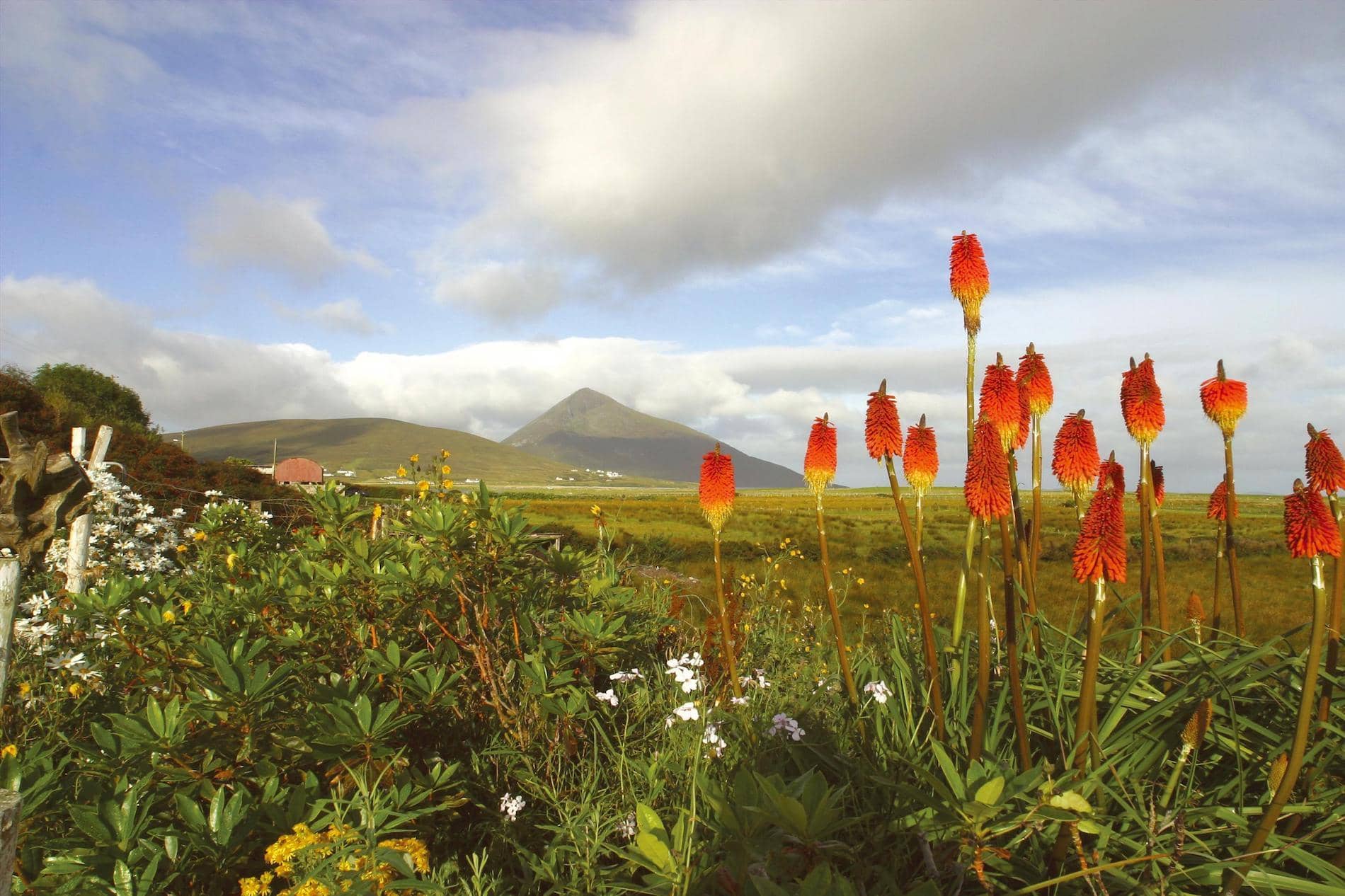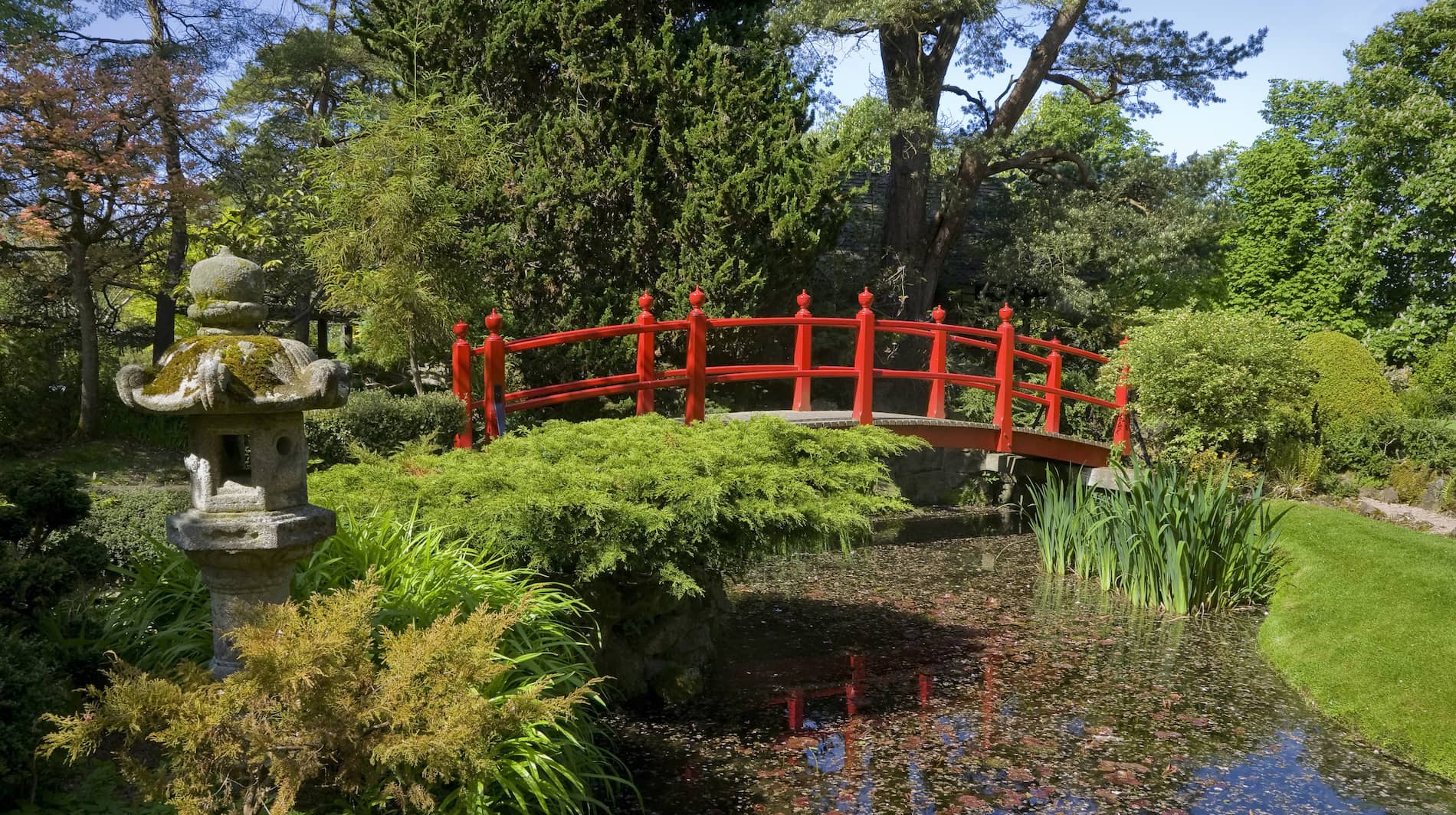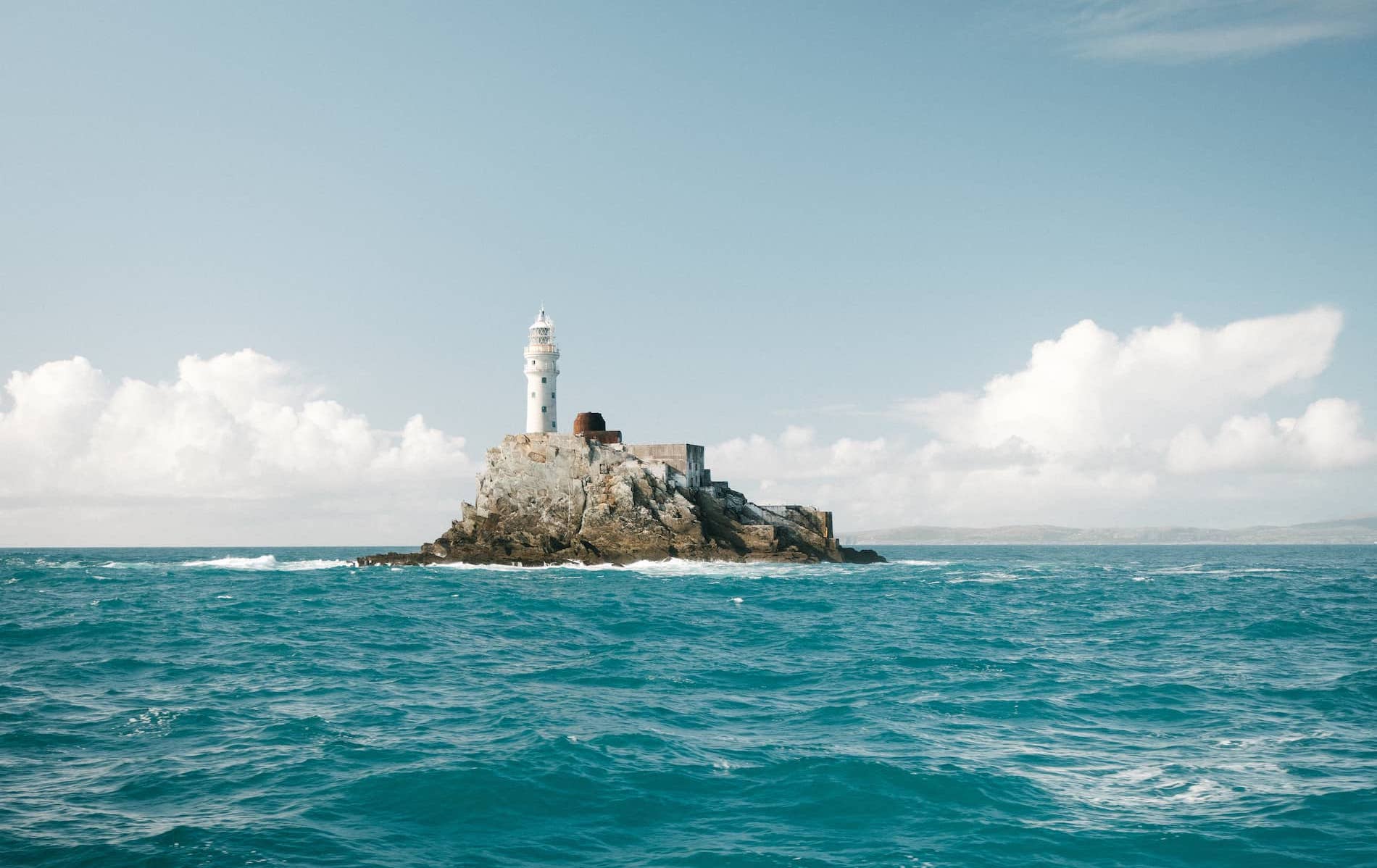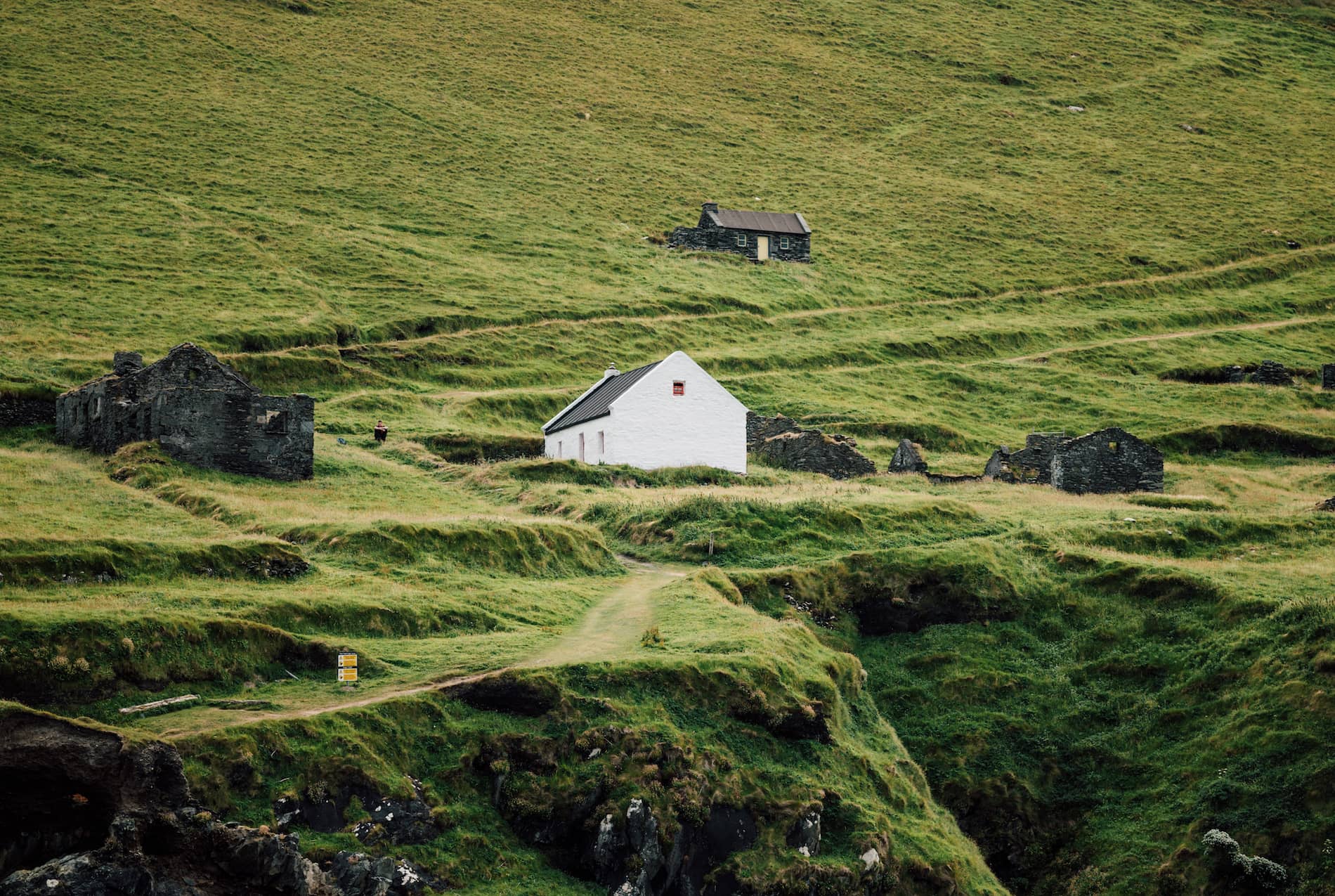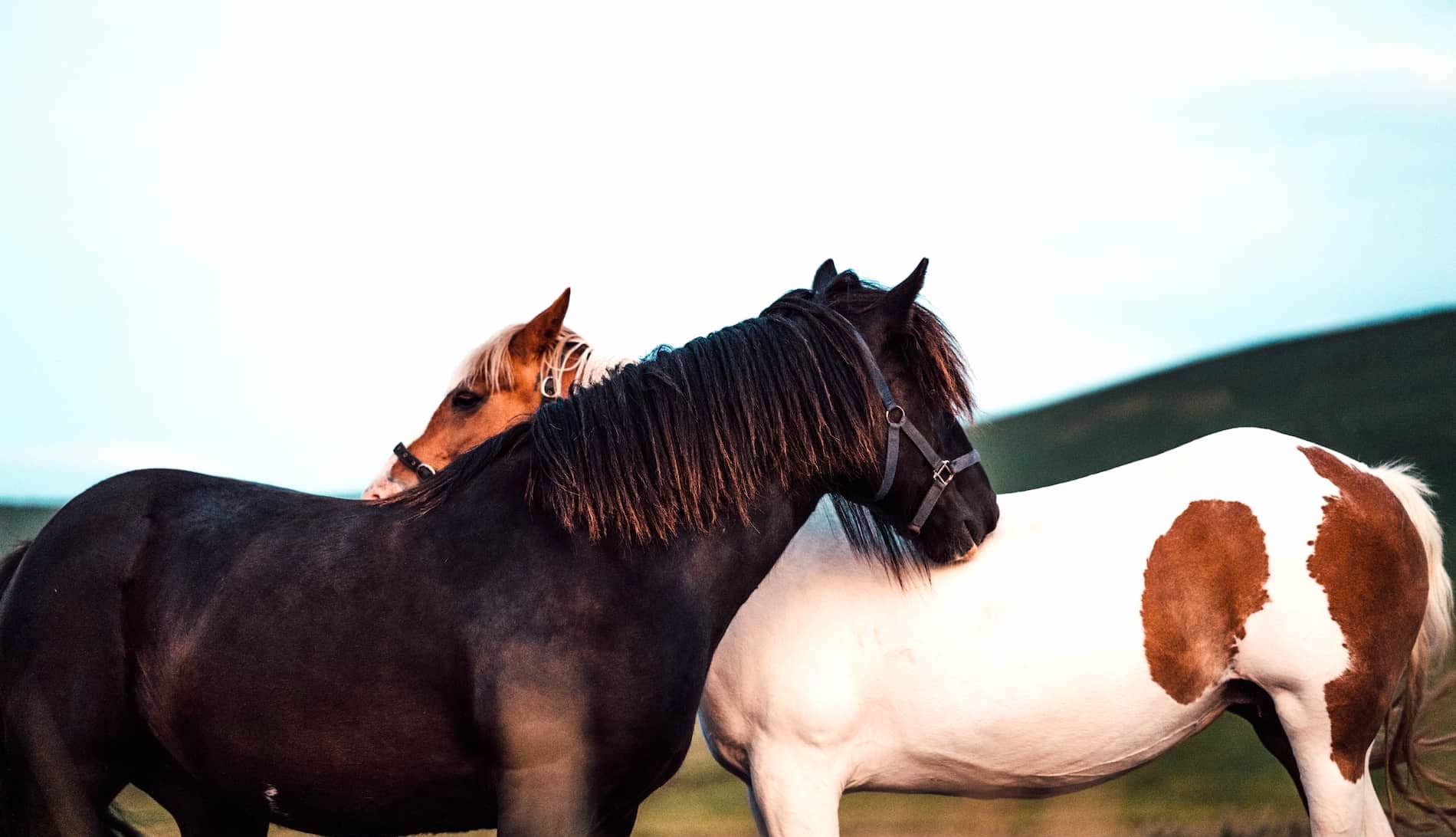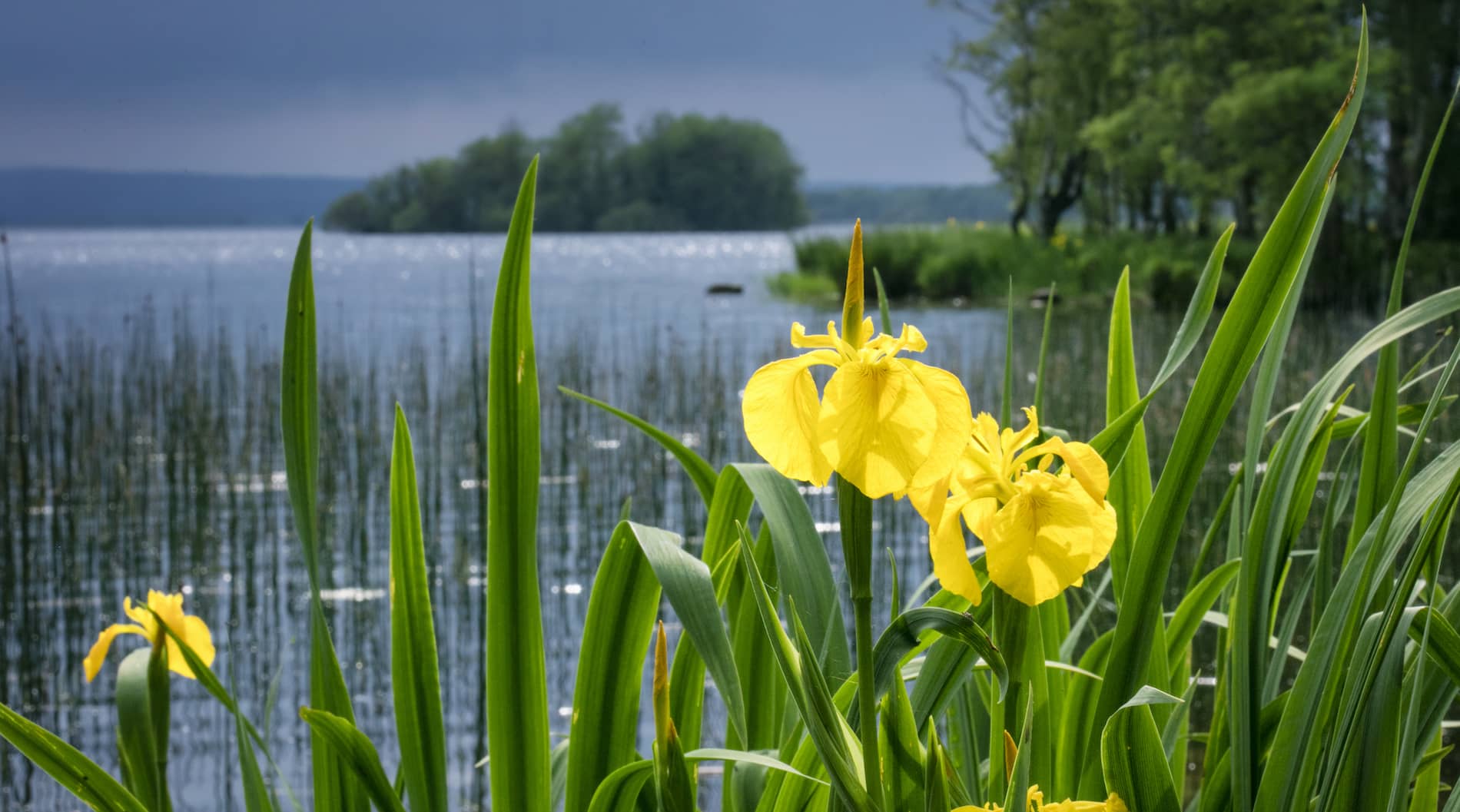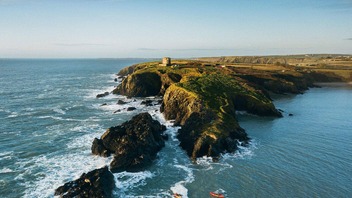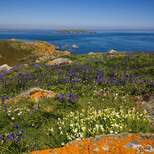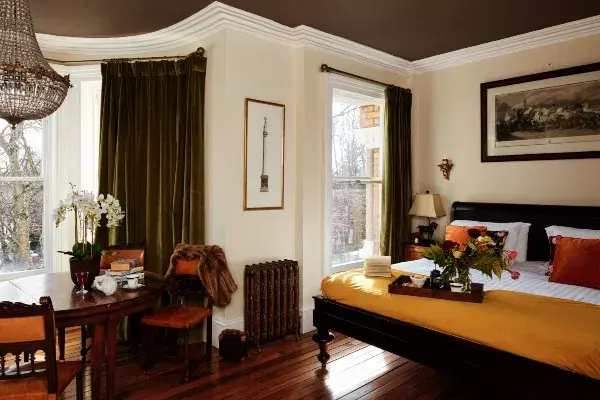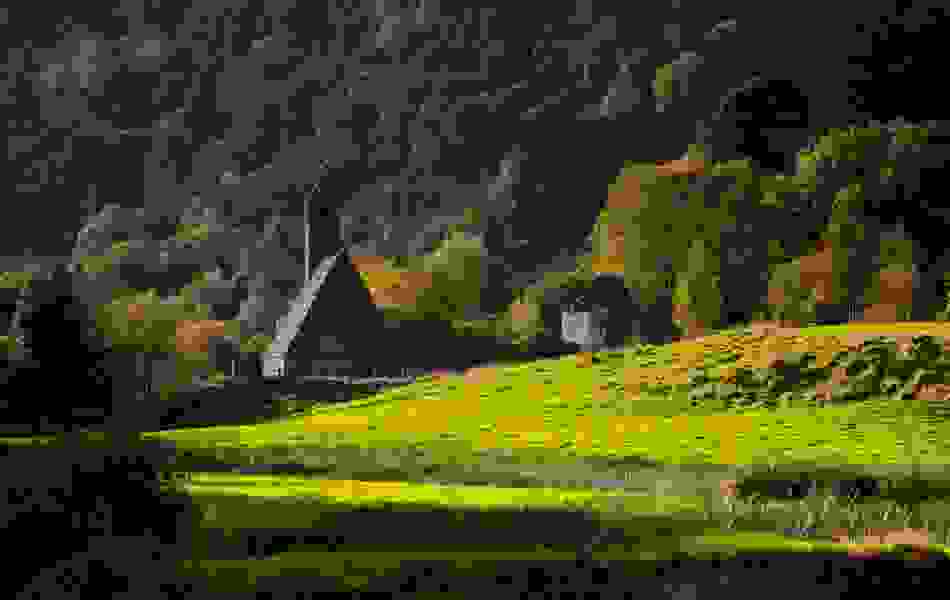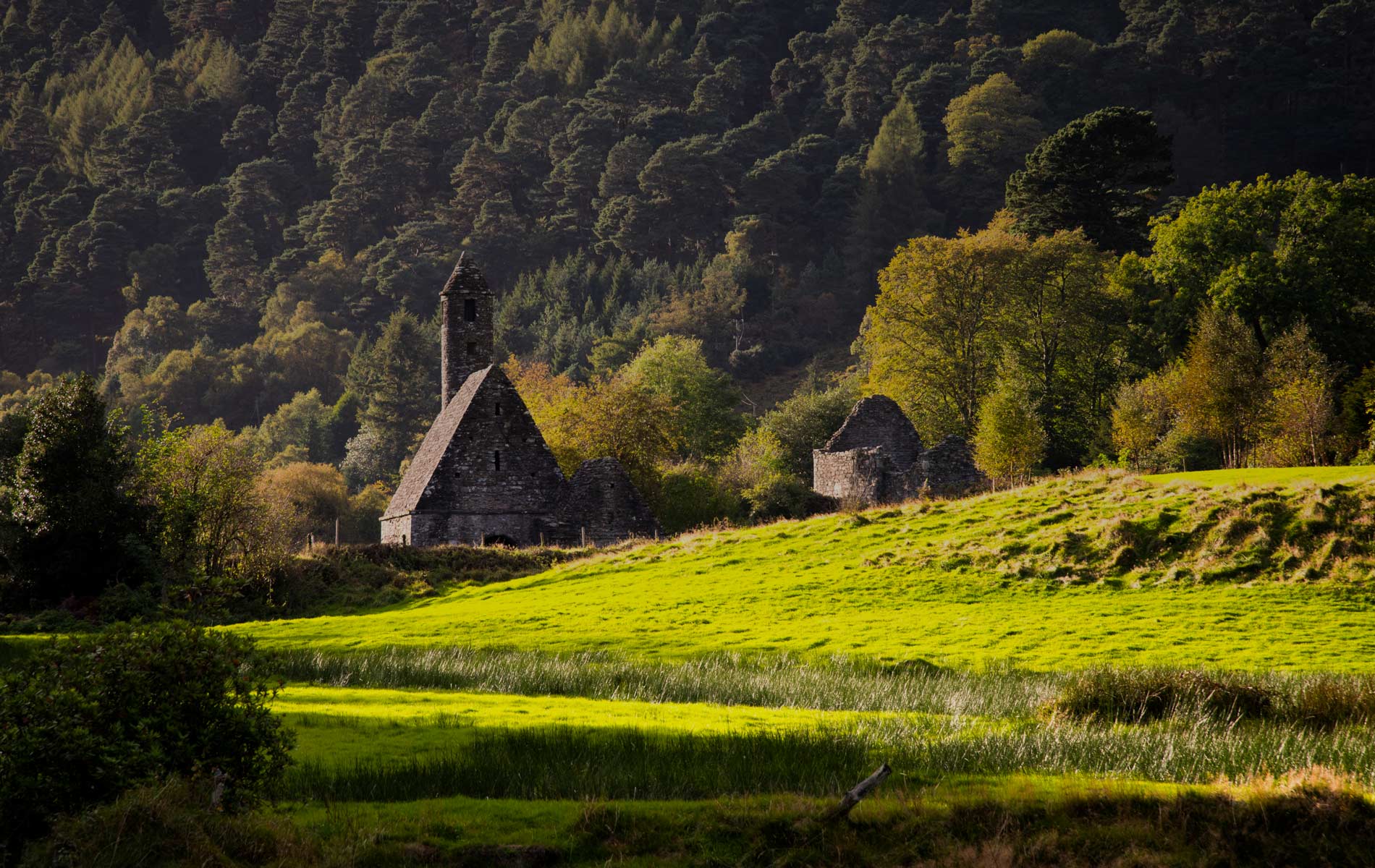

Ireland's Ancient East from County Wexford

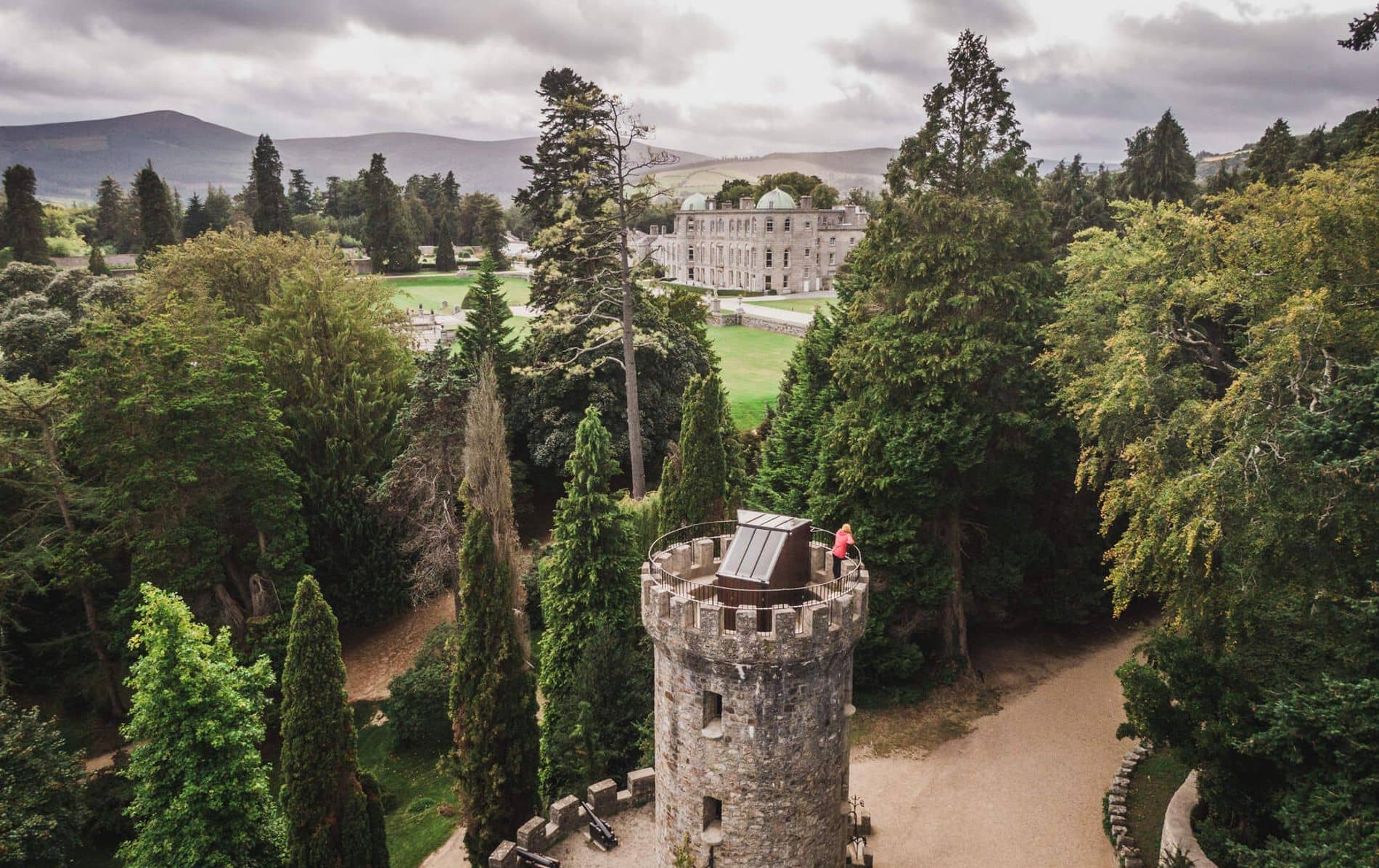

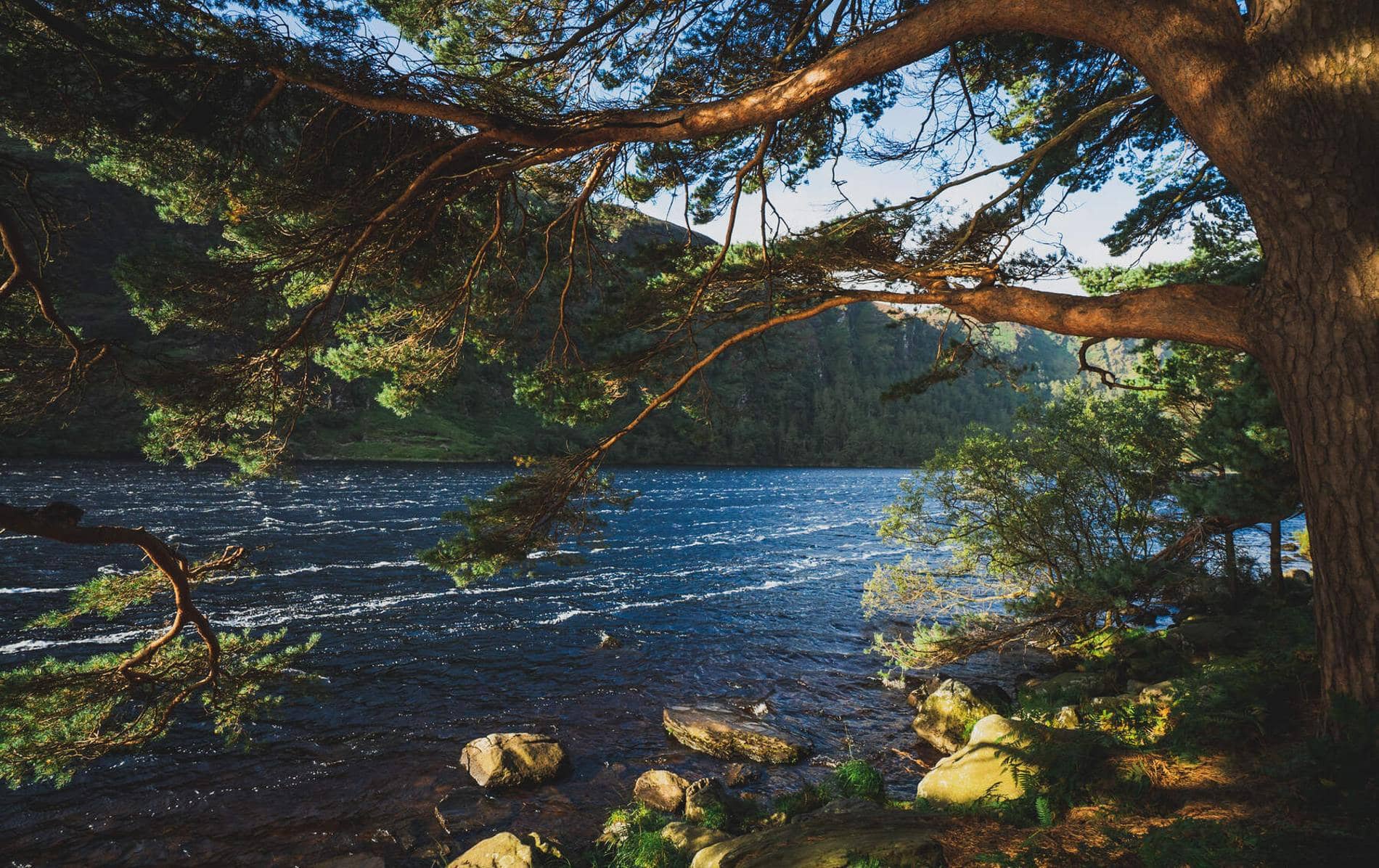

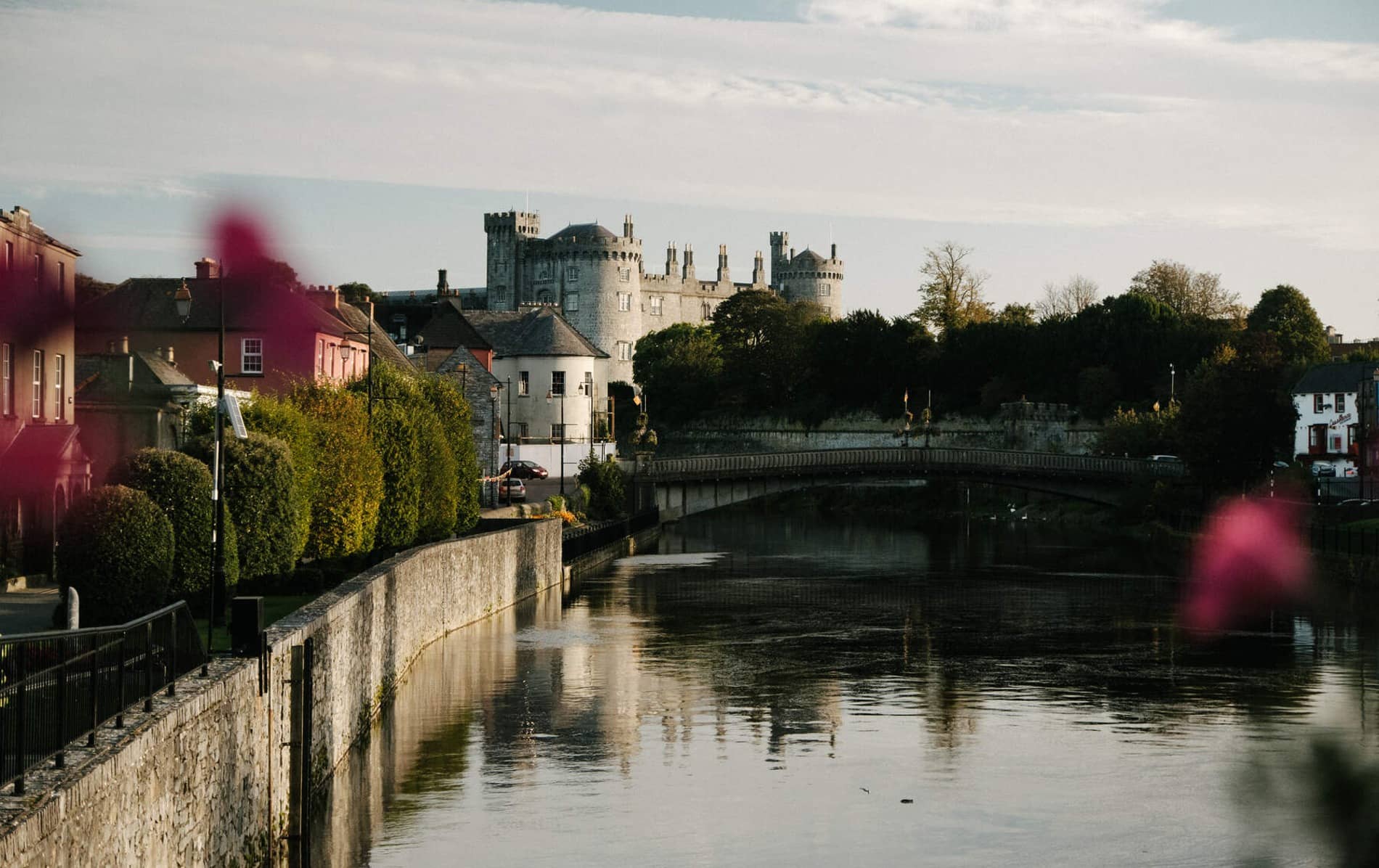
Start from the southern port of Rosslare and follow the trail through Ireland's Ancient East as you discover some of Ireland’s most beautiful landscapes
Explore the unspoiled wildlife and amazing natural environment around the Sunny South East; pass through Ireland's horseracing country; and finish your journey in a lively medieval city. It's time to peel back the layers of history…

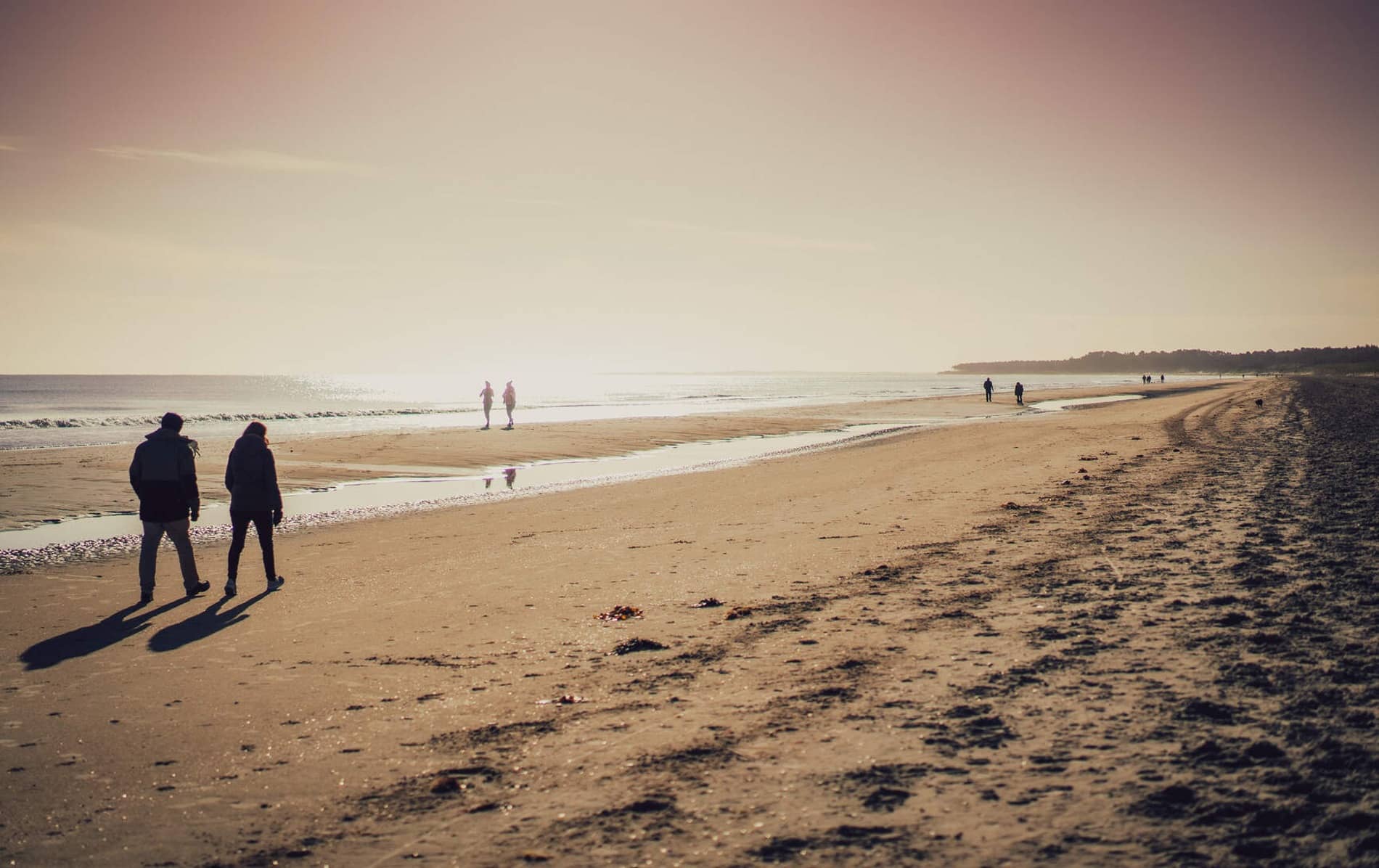
Day 1
Follow the coastline and discover unbelievable tales, and some winged tourists from far far away...
Explore Day 1Saltee sea dogs
Saltee Islands, County Wexford

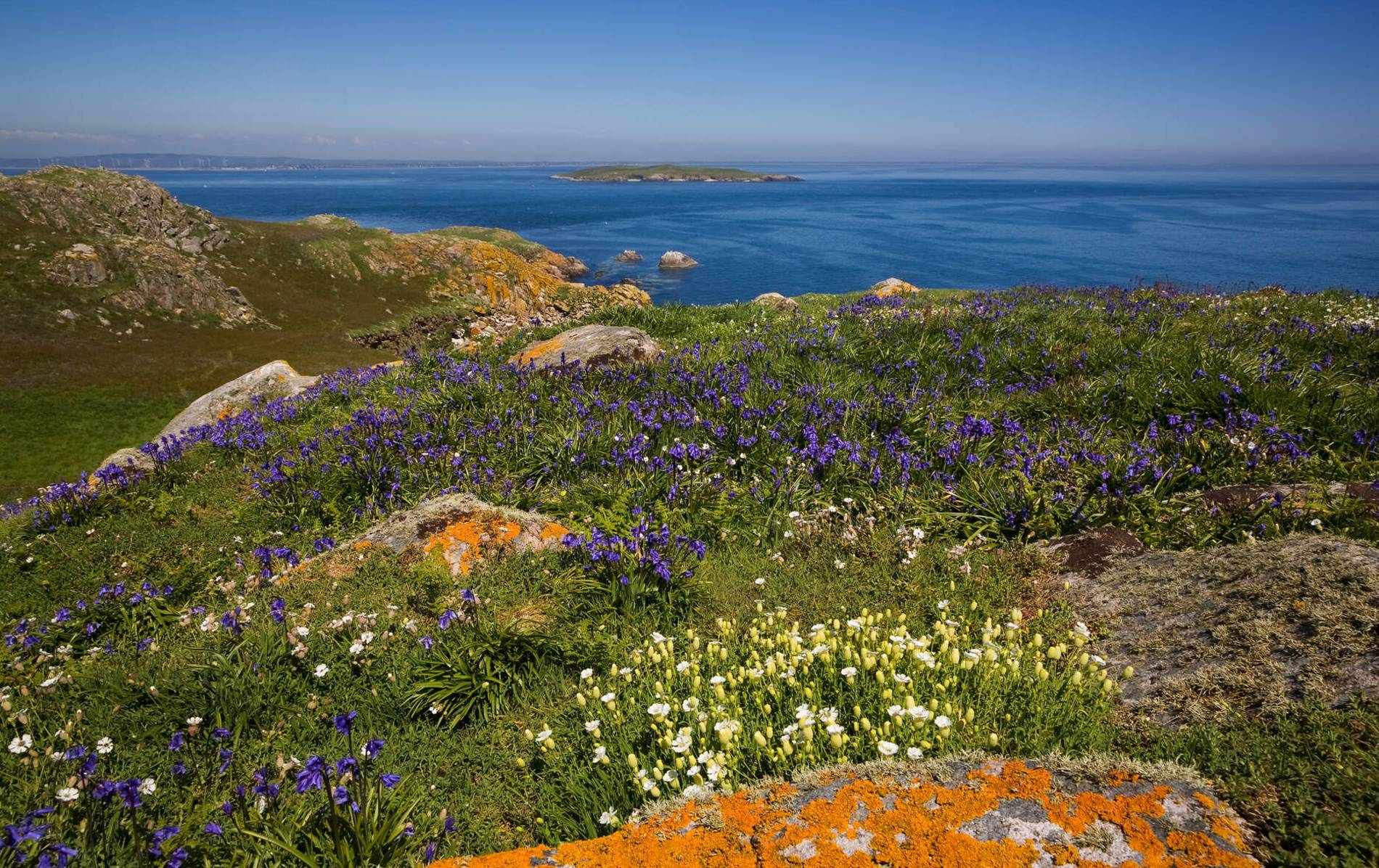
Leave the port of Rosslare behind and take your pick of Kilmore Quay’s always enticing and famously fresh seafood restaurants, or pop into The Undertaker, a buzzing pub founded in 1949 sitting right on the iconic Bullring in Wexford Town. When you’ve had your fill, book ahead with Kilmore Quay Angling to take a tour around the Saltee Islands. These islands are a haven for wildlife and have a colourful history of their own: in 1956 the aviator, nature enthusiast and Wexford native Michael Neale was crowned Prince Michael the First... 13 years after buying the islands for himself and his family.
If you have more time, book into The Lobster Pot Seafood & Steak Bar, which serves up stunning seafood fresh that day from the sea.
29 km
A bird in the hand
Wexford Wildfowl Reserve


Back on the mainland, nature is on dazzling display at the Wexford Wildfowl Reserve. Take a guided tour, scale the observation tower and enjoy the interactive exhibition centre at this remarkable site, dedicated in part to some of the most ancient and abiding sea travellers in the world: the 10,000 white-fronted geese from Greenland that cross the Atlantic to settle here each winter.
If you fancy getting closer to nature, the Sea Cave Kayaking Experience about an hour’s drive away on the Hook Peninsula gets you right in the water.
10 km
Beach on screen
Curracloe Beach, County Wexford

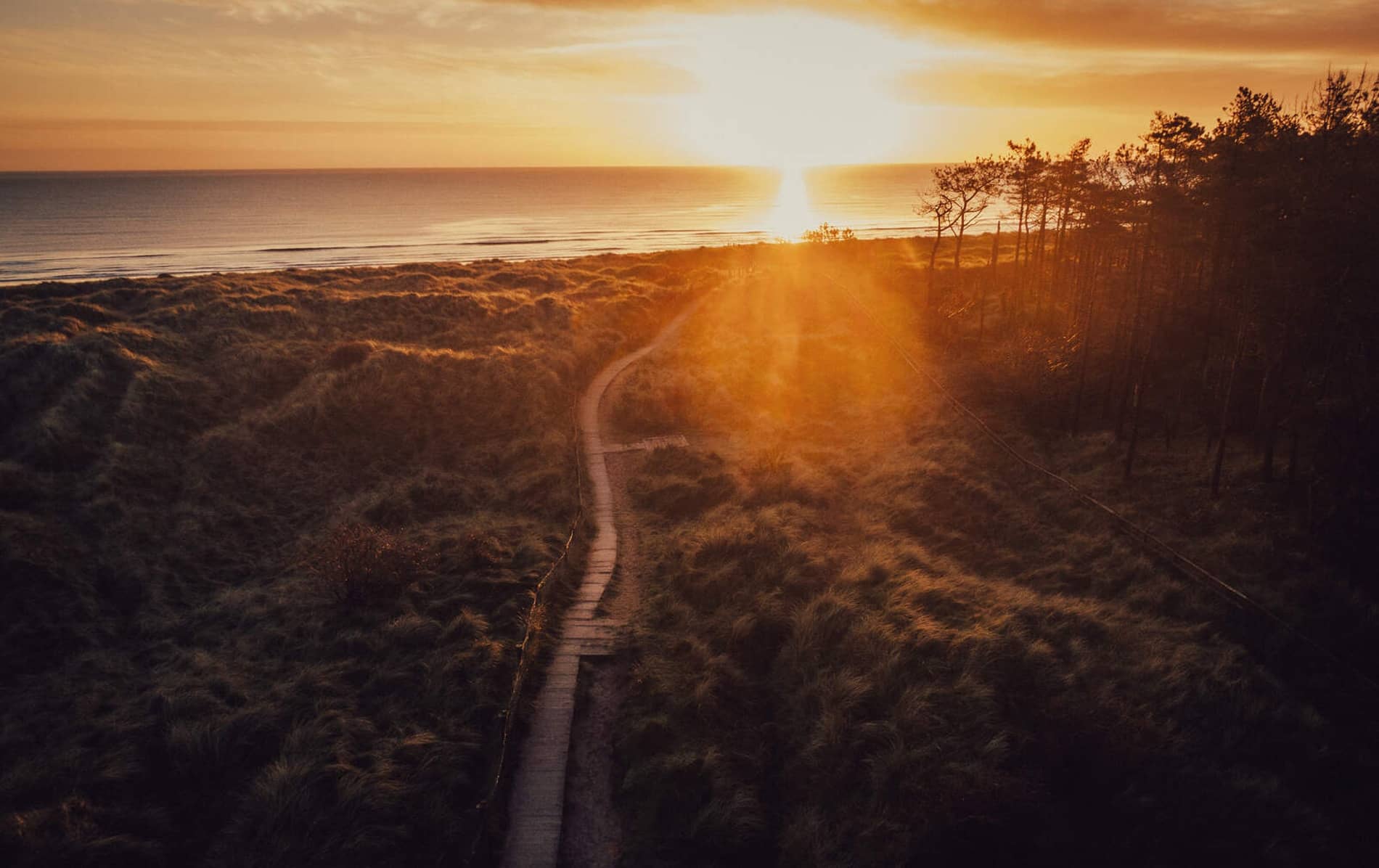
The sands at Wexford's Curracloe beach once doubled as the backdrop for Saving Private Ryan's opening scenes, and for unrequited love in the adaptation of Colm Tóibín's novel Brooklyn – it's worth a stop for its beauty alone. But it's Victorian elegance that comes to the fore over at Wells House and Gardens, historically home to wealthy Tudors and German industrialists alike. Stay awhile and discover the secrets of this magnificent estate. Don’t miss the enchanting gardens and woodland trails, which are rendered beautifully in the collection of watercolours by former owner Lady Frances, and are displayed within the house.
If you have more time, there's something special nearby. Described by Hollywood actor Robert Redford as “sublime”, Marfield House Hotel has been run by the Bowe family for over 30 years. A meal in The Duck Restaurant and a wander around the manicured gardens are to be savoured.
80 km

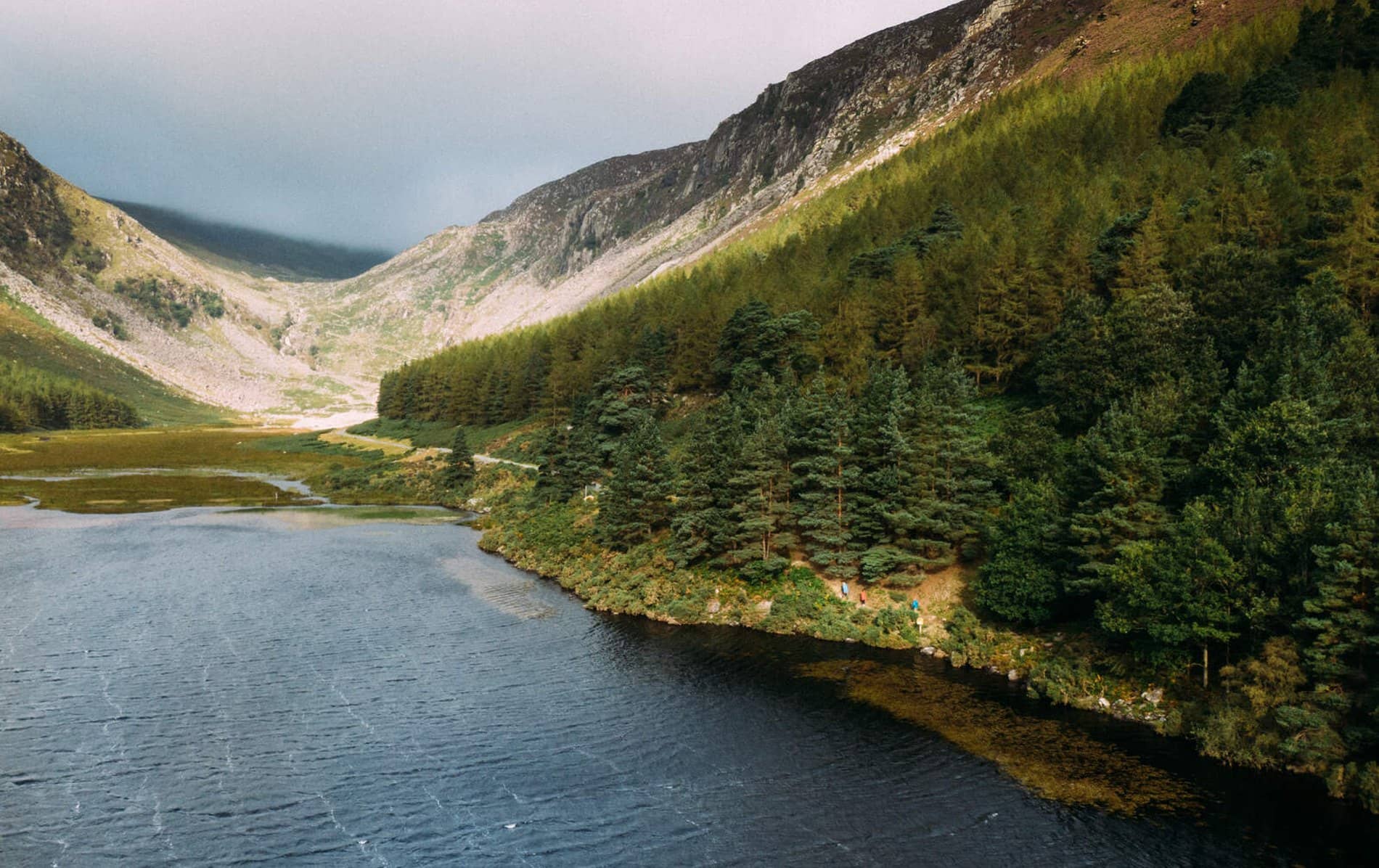
Day 2
We’re talking coffee mornings at Palladian mansions, picture-postcard scenery, carefree walks and monastic serenity on this leg of your journey.
Explore Day 2Live behind bars
Wicklow Gaol, County Wicklow

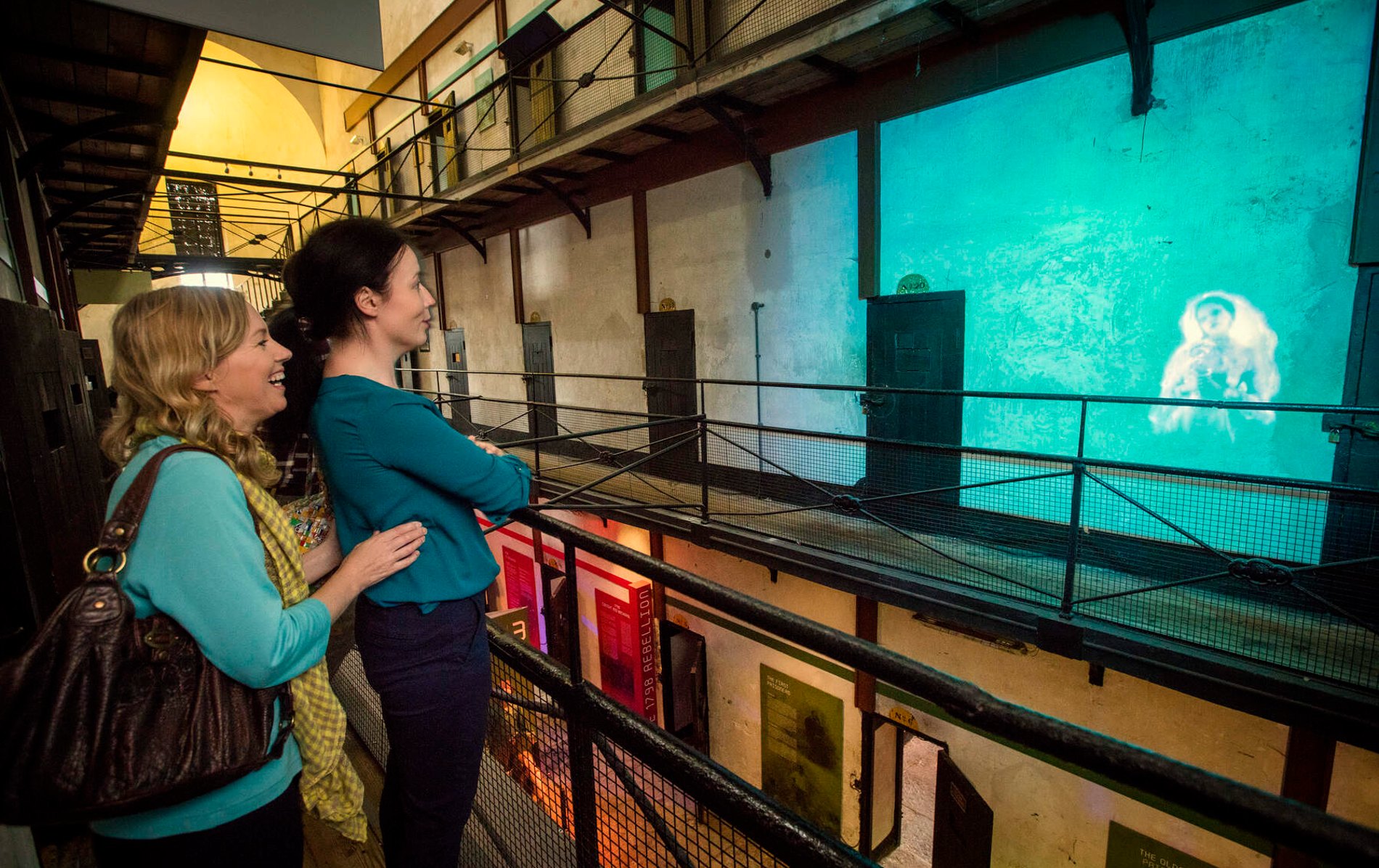
Despite the fact that you’re now in beautiful County Wicklow – the Garden of Ireland – the horrors of 18th century penal servitude can still be felt as you walk inside Wicklow Gaol. The overcrowded prison used to include Famine-era thieves, criminals awaiting transportation to the penal colonies of Australia and even children among its terrified inmates. Today, visitors can explore the chilling tales and ominous dungeon corridors of this historic site in the company of a troupe of local actors. Feeling daring? Book in for the paranormal tour instead – it claims to be amongst the most haunted buildings in Europe.
If you have more time, the Avoca Café at Mount Usher Gardens is renowned for its fresh, quality ingredients and tempting cakes. It’s a worthy stop to avoid rumbling bellies and to smell the roses!
25 km
Glendalough
Glendalough, County Wicklow

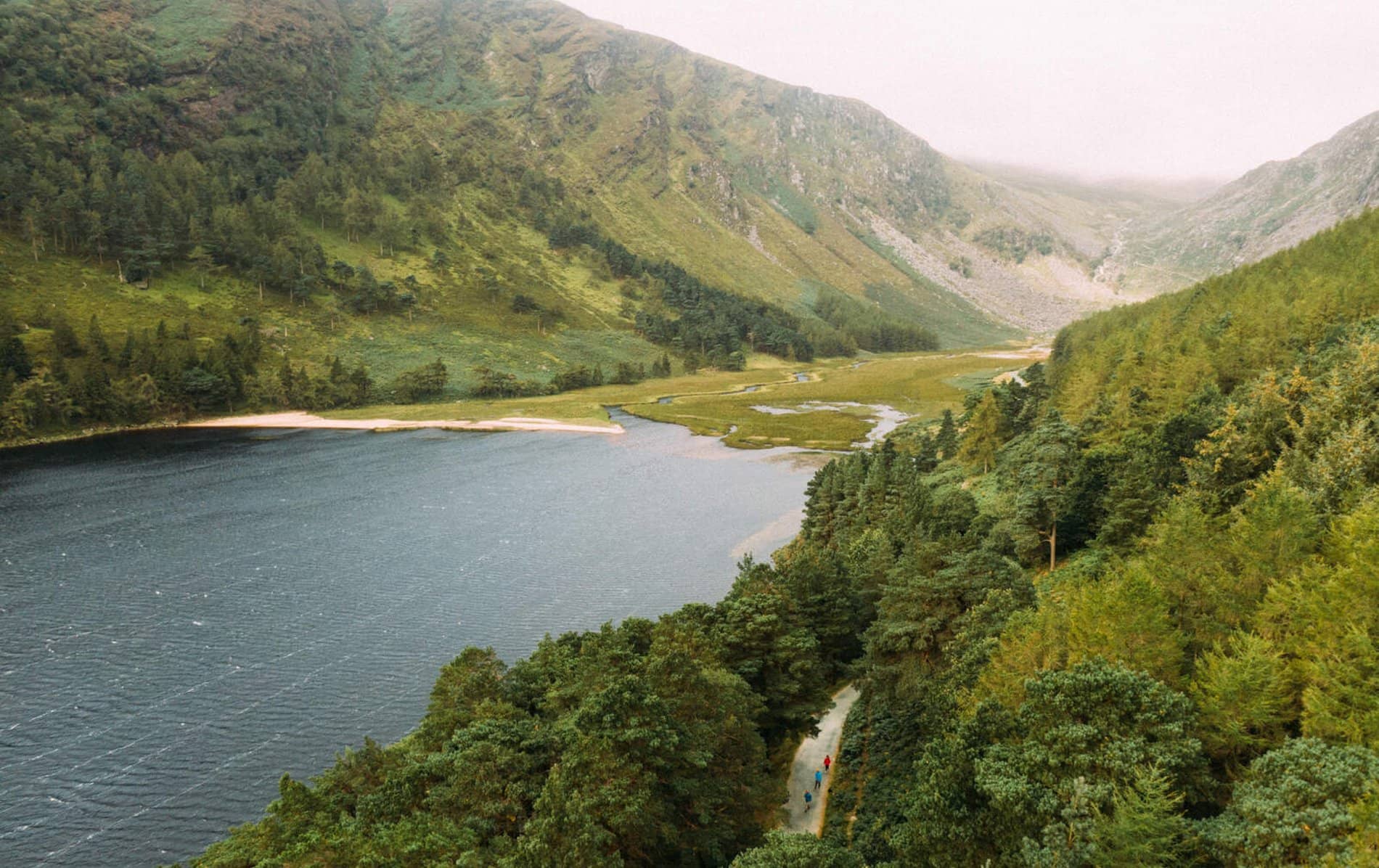
Lonely Planet called Glendalough “one of the most beautiful corners of the whole country”, and we couldn’t agree more. The Wicklow Mountains National Park is nothing if not varied: rushing streams and purple mountains share space with bogland, stone bridges and green valleys. In one such valley – Glendalough (Valley of the Two Lakes in the Irish language) – a solitary 6th century monk, St Kevin, sought peace. Disciples started to arrive at St Kevin’s retreat around 540AD, and the settlement soon expanded into a cathedral, six churches and a round tower, becoming one of Europe's most important monastic sites. When you visit, make sure to pack good walking shoes and enjoy the stroll around these twin lakes among some of the prettiest scenery in Ireland’s Ancient East.
If you have more time, built in 1781, the octagonal Wicklow Head Lighthouse is no longer in operation but can instead be rented from the Irish Landmark Trust for a stay that will shine brightly in your memory! Its six floors are the epitome of nautical luxury.
28 km
The beauty of Powerscourt
Powerscourt House & Gardens

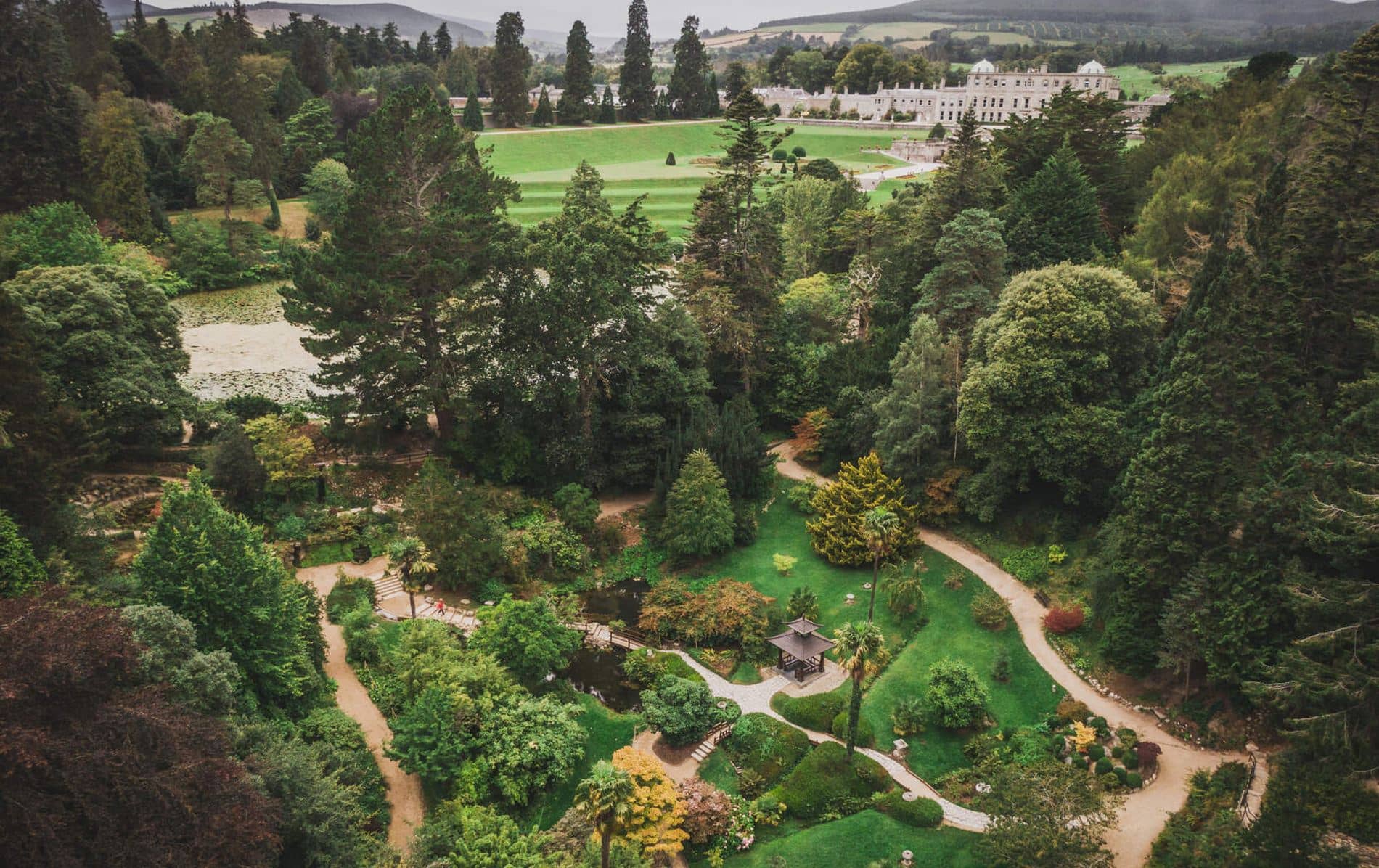
With 47 acres of gardens within sight of the Sugar Loaf Mountain, Powerscourt House and its gardens are tailor-made for wandering. Originally designed in 1731, the gardens were voted by National Geographic as one of the top three gardens in the world and they contain such treasures as the Pepperpot Tower and the Pets Cemetery. They also welcome open-air theatre performances, including Shakespeare and Jane Austen, alongside their dazzling floral displays. As for Powerscourt House itself, it’s justly famous for the sheer beauty of its setting; inside you’ll find all manner of crafts, fashion, food and design in which to indulge your senses!
If you have more time, Powerscourt’s Waterfall is a short drive from the main estate, and tumbles almost 400 feet down to the green grass, past the beech, oak and larch trees. It also keeps the cuckoos, ravens and willow warblers well-watered throughout the year!
70 km

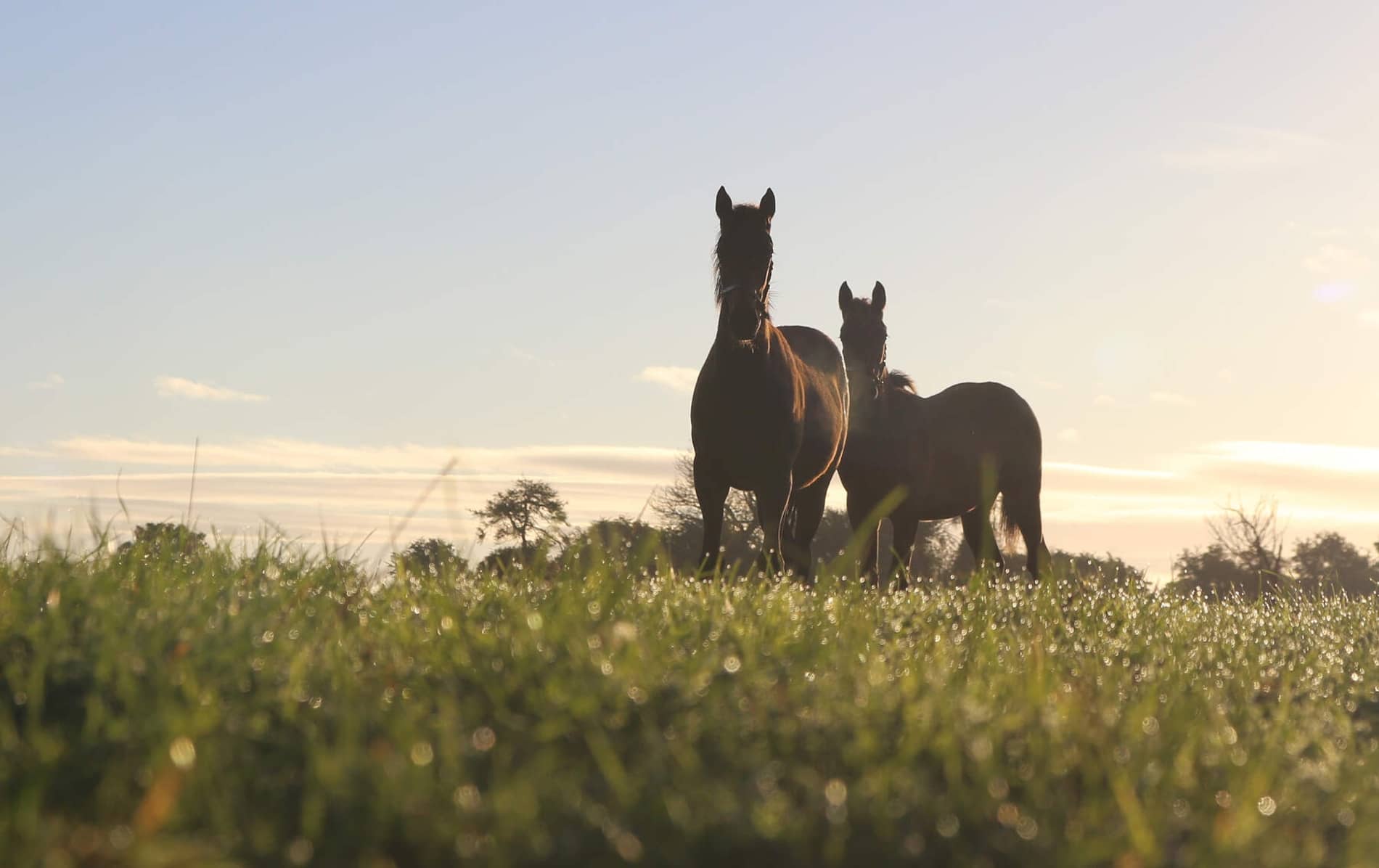
Day 3
Relish the fast-paced thrills, passions and pure fun of a day at the races, before adding a little touch of glamour to your trail through Kildare.
Explore Day 3Place your bets
The Curragh, County Kildare

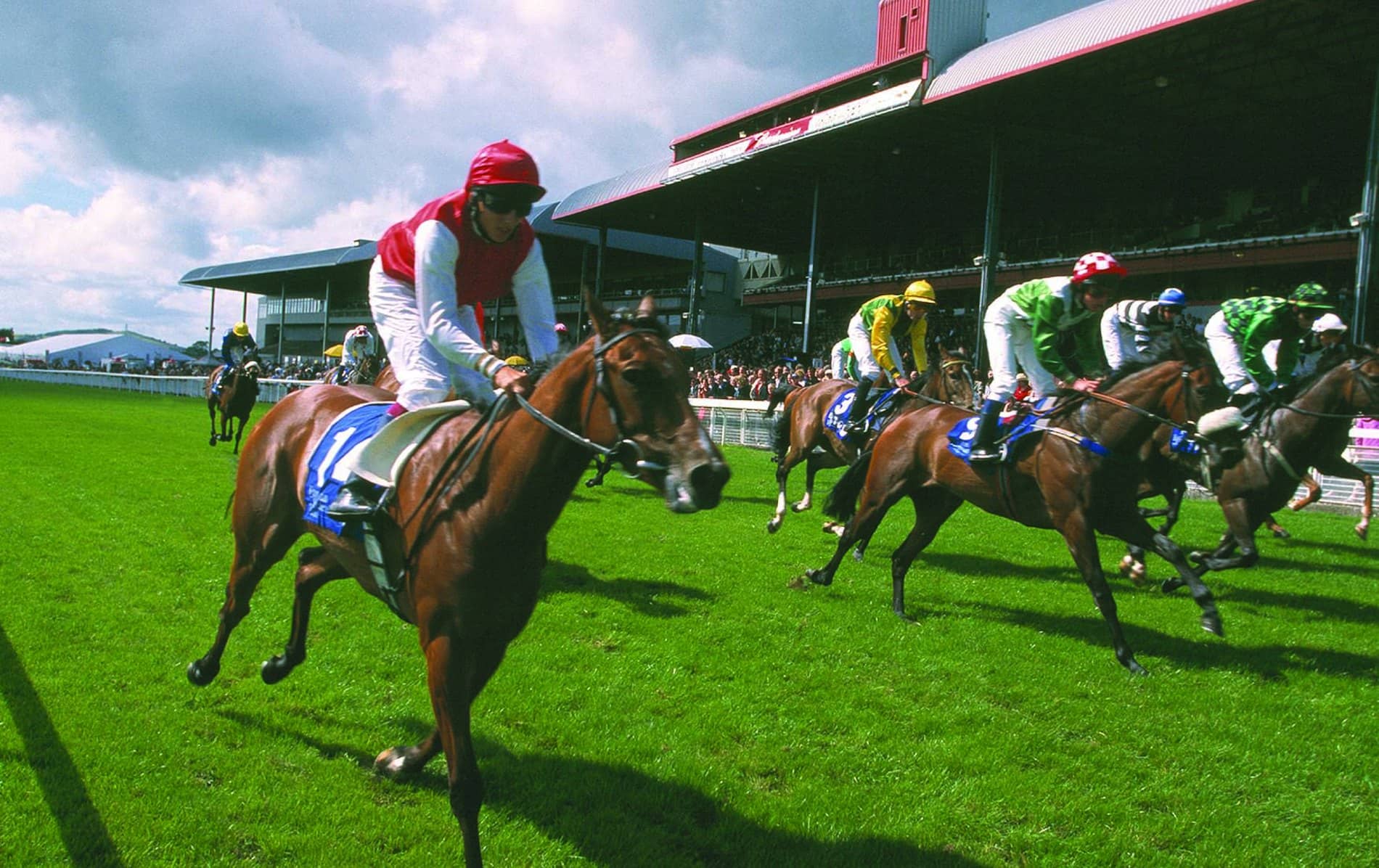
World-famous for its thoroughbreds, The Curragh is one of the finest racing tracks in Europe. Take a tour off-season and witness the spectacle of long lines of thoroughbreds training across miles of rich plains. Or visit the Curragh Military Museum, which focusses on the area’s military history, revealing how these grounds have been used for the Jacobites and their war horses in 1686, as well as British soldiers during the First World War.
If you have more time, when you’ve explored this Irish landmark, head for some retail therapy at nearby Kildare Village, Ireland’s largest designer retail outlet.
8 km
Living legends in the flesh
Irish National Stud, County Kildare

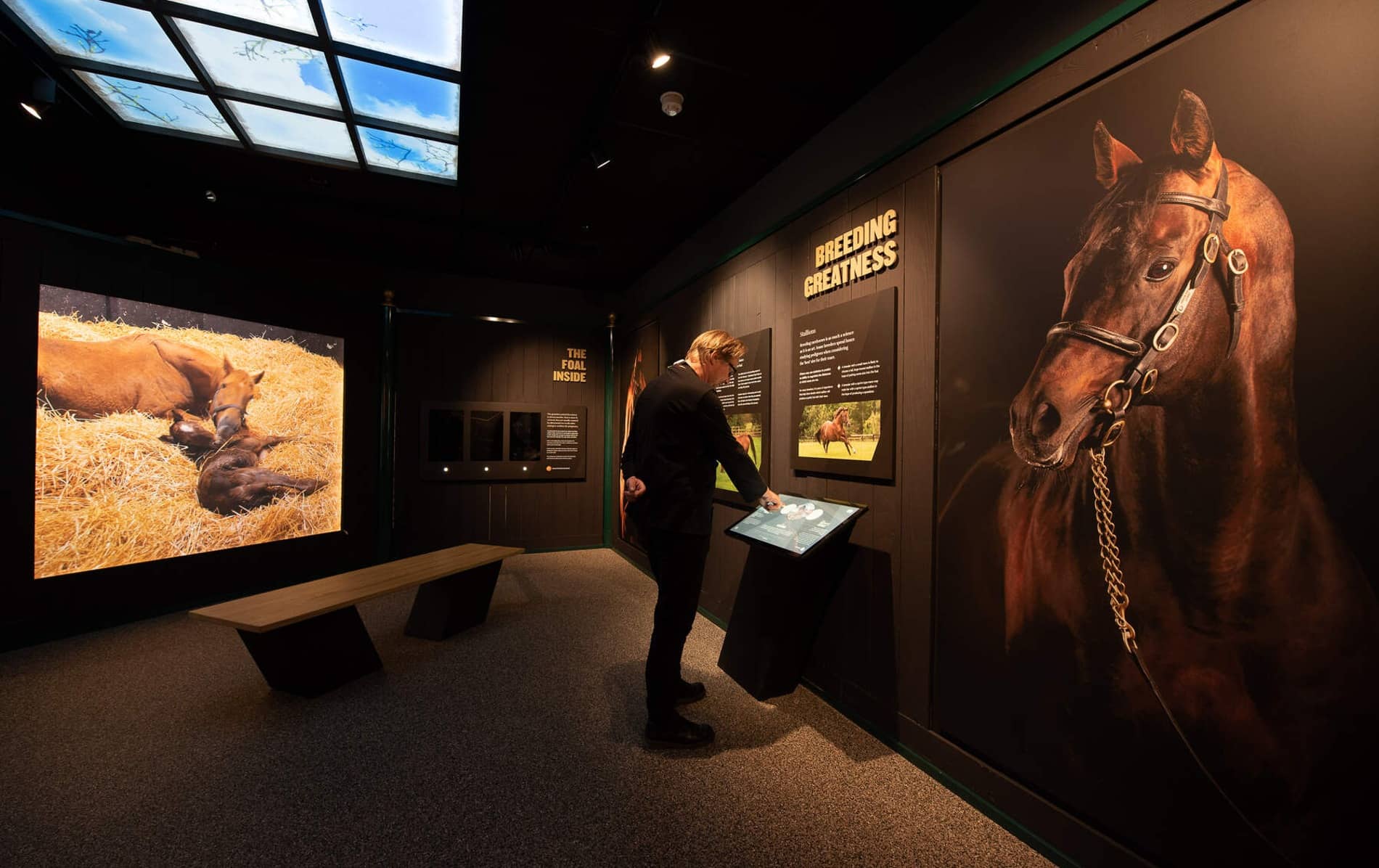
There’s plenty of equestrian-related enjoyment to be had at the Irish National Stud in Kildare, where the winners of five classics were produced and the tale of Colonel William Walker is revealed. A true character, the Colonel used astrological charts to determine the futures of his foals – any born under undesirable conditions were sold immediately, regardless of lineage. Move from horses to horticulture next at the Japanese Gardens next door. Designed to represent the “Life of Man”, the gardens were created by Japanese master horticulturalist Tassa Eida, and invite you to adjust and adapt to a slower, more peaceful pace.
If you have more time, stick around in Newbridge next for the Museum of Style Icons displaying famous clothing worn by everyone from Grace Kelly to The Beatles. It even includes Audrey Hepburn’s original Little Black Dress from the film Charade.
22 km

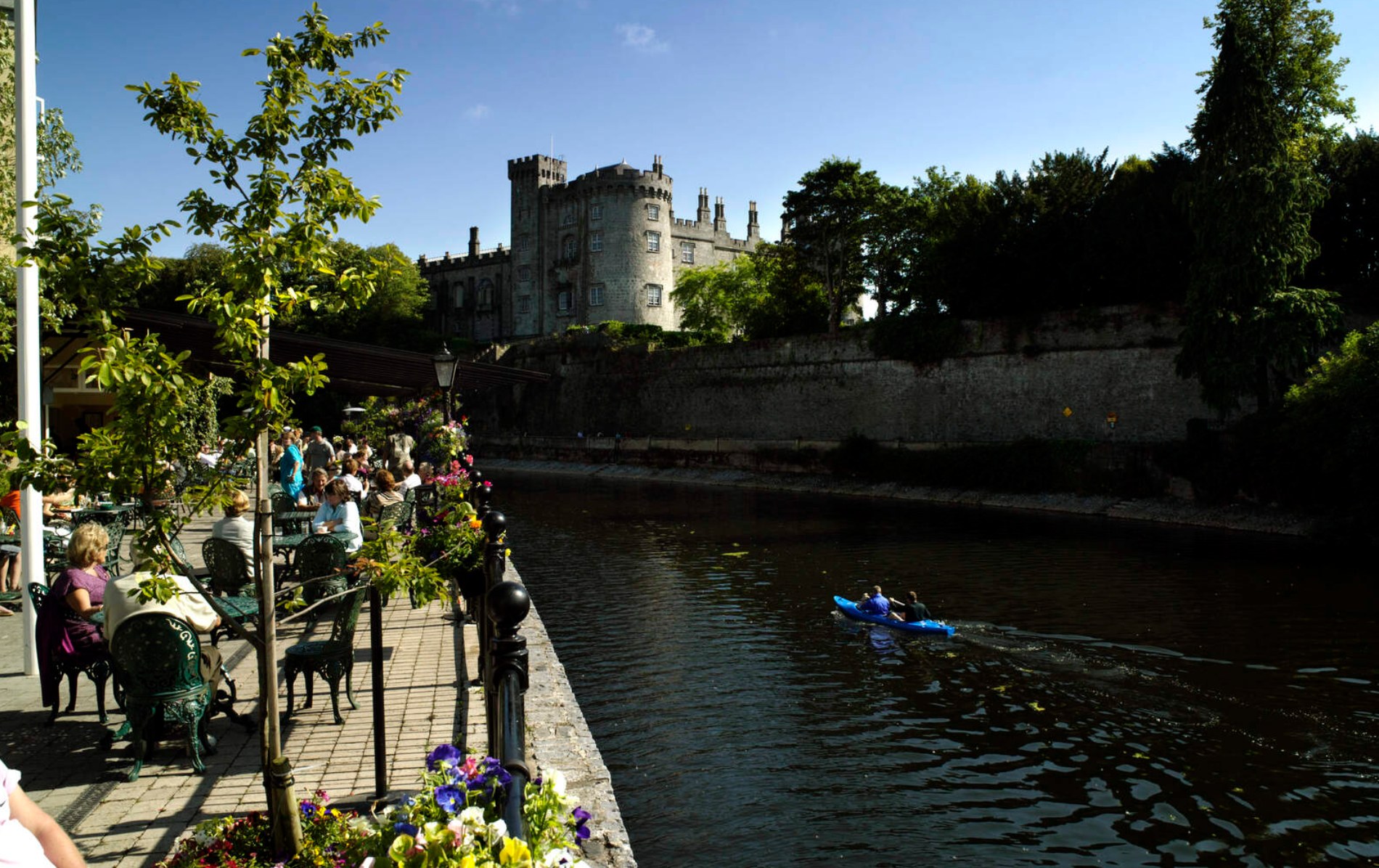
Day 4
Enjoy this tale of a town that’s immensely proud of its explorer son, and a medieval city that was gifted an incredible castle for the sum of £50!
Explore Day 4Explorer extraordinaire
Clancy's Athy, County Kildare

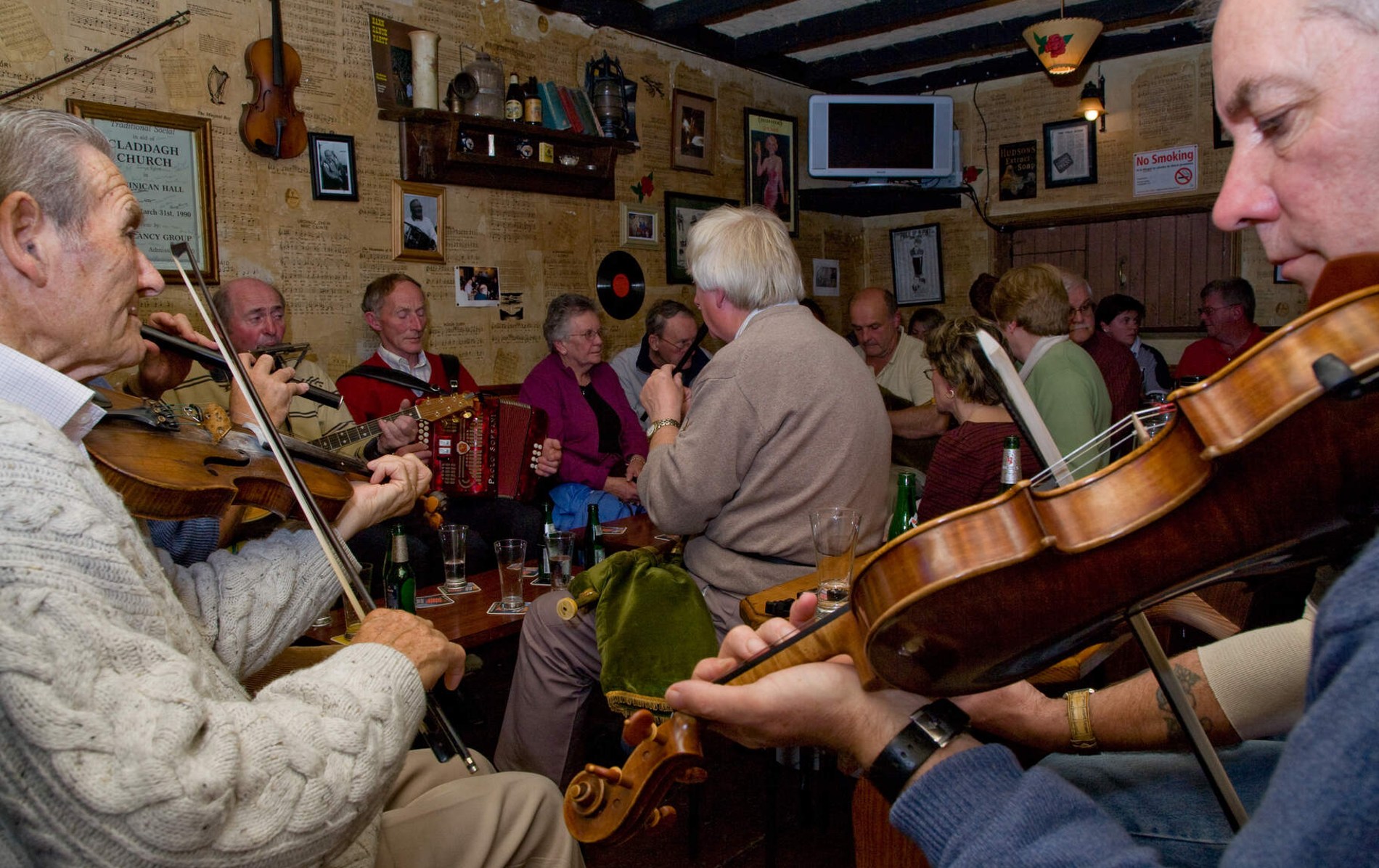
Pay homage to one of Ireland’s greatest explorers at the Shackleton Museum in the town of Athy. Born in 1874, Sir Ernest Shackleton was destined for lands far beyond the lush fields of Kildare: he went on to become one of the principal figures of the heroic age of Antarctic exploration. The museum houses the only permanent exhibition dedicated to the polar explorer and local boy, including unique family photos from the Shackletons and footage from the Endurance Expedition.
If you have more time, stop by for a pint or two and a hearty meal at Clancy's Athy. You'll want to stick around for the entertainment too, as Clancy's say that they're the longest running free trad music session in Ireland! Since 1966, every Thursday night, a crowd gathers to watch this very special sight.
22 km
A tower and an inferno
Duckett's Grove, County Carlow

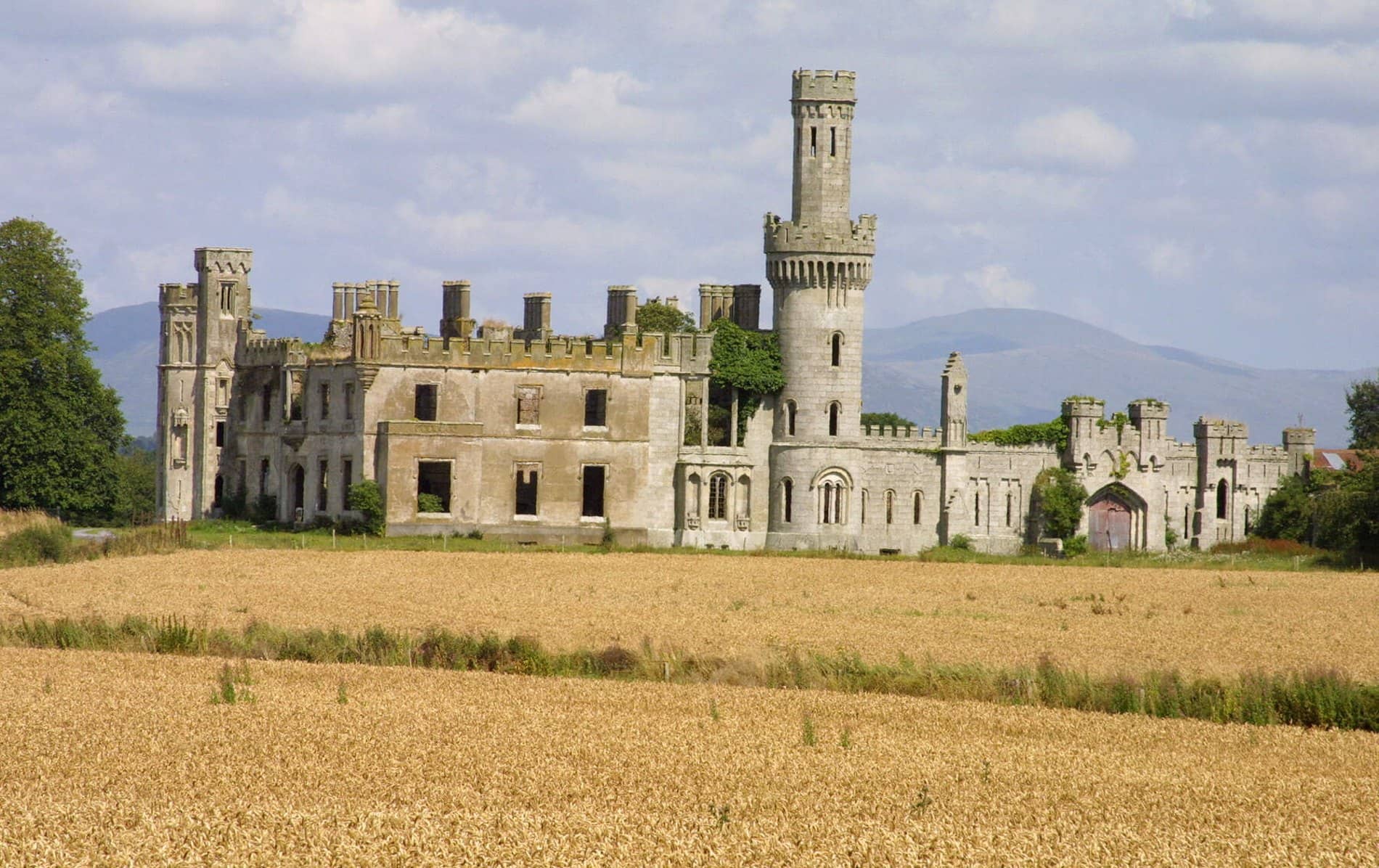
It may have been gutted by fire in the 1930s, but it's easy to imagine the glamour of Duckett's Grove in County Carlow during its prime in the 19th century. Towers and turrets soar over the surrounding landscape, looking out across the gently sloping hills of the midlands. The walled gardens, the subject of an intensive restoration project, bloom with every colour of the rainbow in spring. But it's the tales that make this ancient ruin so interesting, including the story of a daughter who was left only one "angry shilling" in her inheritance, and rumours of a banshee (a screaming spirit who warns of an imminent death) that roams the halls...
If you have more time, soak up some culture at the Visual Arts Centre in the nearby town of Carlow, a hub of art, design and cinema from local, national and international talent. Before you leave, make sure you stop over for lunch in Lennon's, the on-site restaurant renowned for championing local produce.
48 km
A castle by a river, a city in its wake
Kilkenny Castle, County Kilkenny

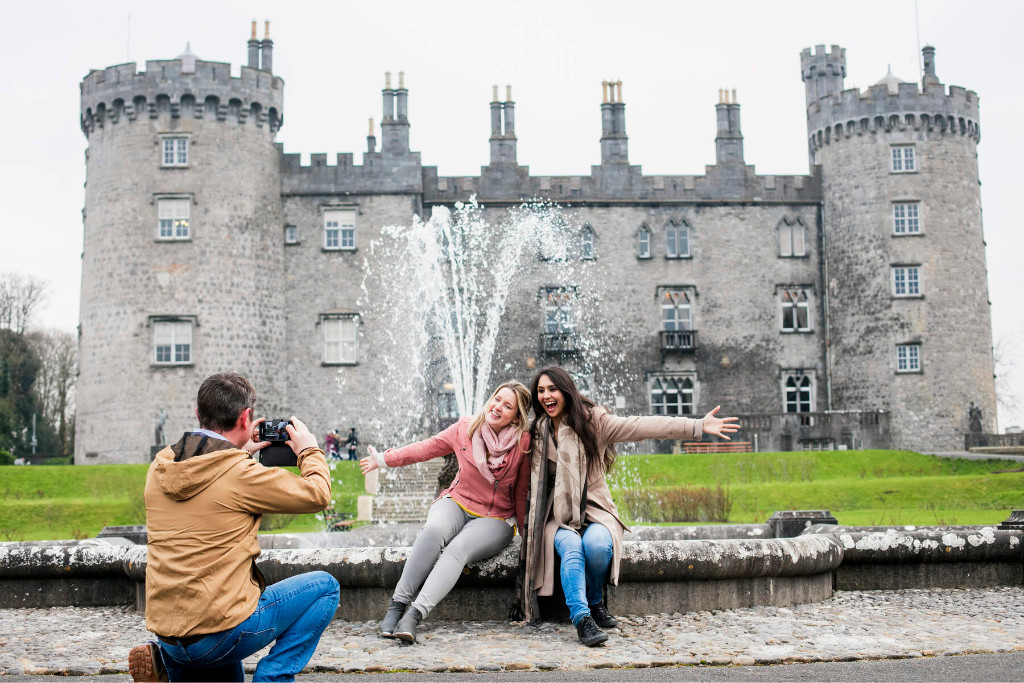
Kick off your tour of this intriguing medieval city at Kilkenny Castle. It was an historic day when James Arthur Butler, 6th Marquess of Ormonde, handed over the keys to his ancestral home in 1967. His family had been there since 1391, but with the building in disrepair he gave it to the people of Kilkenny for a mere £50. More tales await along the city's Medieval Mile, where you’ll pass the Shee Alms House, built in 1582 to “accommodate 12 poor persons”; Kyteler’s Inn owned by Alice Kyteler, the first person in Ireland to be accused of witchcraft; and St Canice’s Cathedral, one of only two round towers in the county that you can climb. And don’t miss the Kilkenny Design Centre – a treasure trove of quality Irish craft work and design, with a café that’s famous for delicious and locally sourced food.
If you have more time, take a trip to Mount Juliet Estate, named after a 16-year-old bride back in the 1750s. Now a luxury hotel, it's the ideal place to perfect your golf swing, indulge in country activities including archery, clay pigeon shooting and horse riding or simply to enjoy Michelin star food at the Lady Helen restaurant. When you're ready, move onwards, deeper into Ireland’s Ancient East, where more stories will unfold as you travel...





